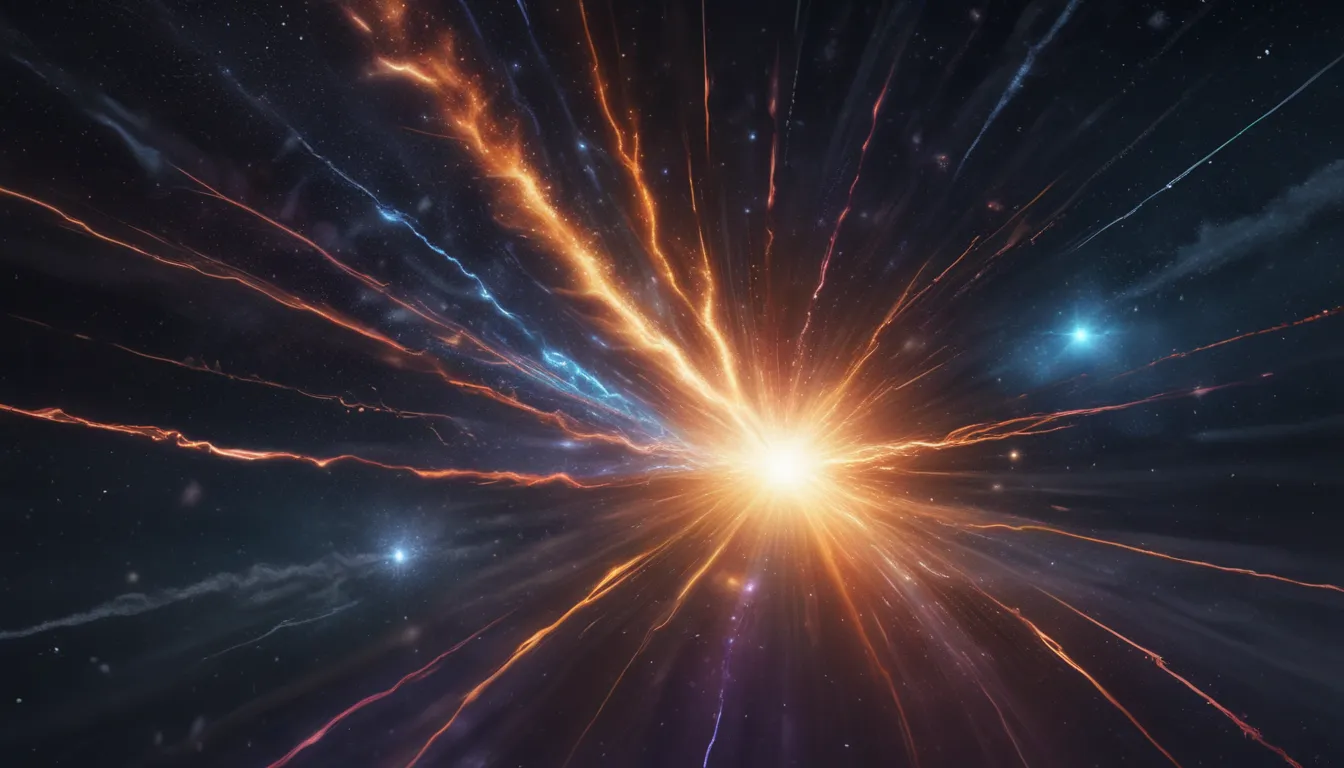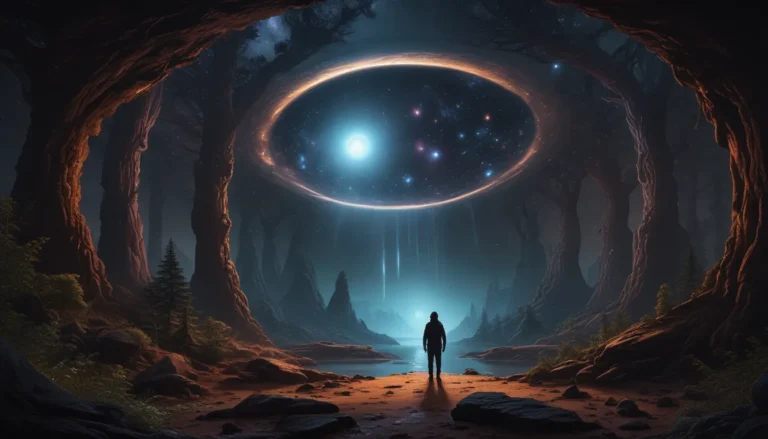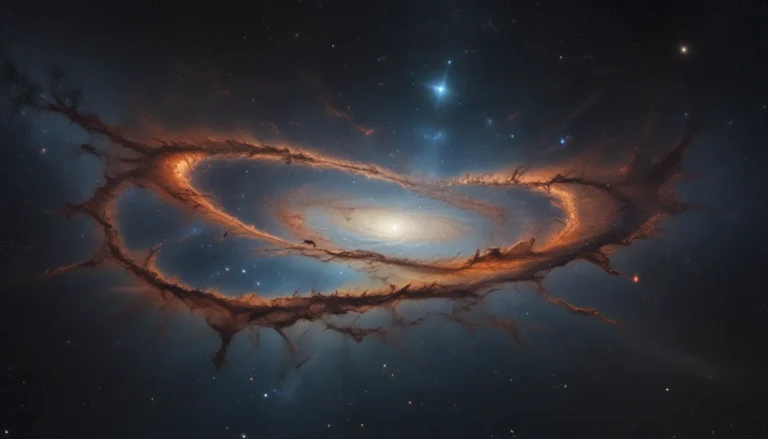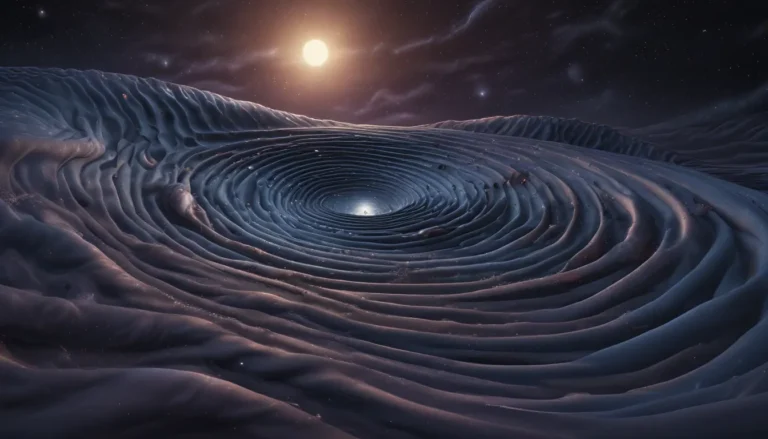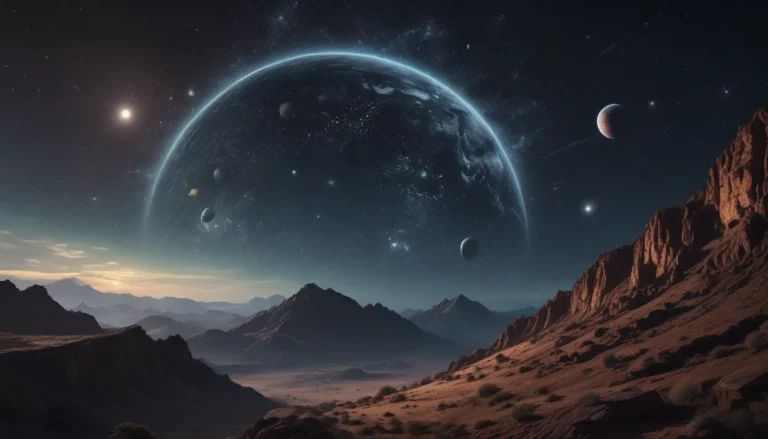The pictures we use in our articles might not show exactly what the words say. We choose these pictures to make you interested in reading more. The pictures work together with the words but don’t take their place. The words still tell you the important facts.
Are you ready to embark on a journey into the captivating realm of gamma-ray bursts? These cosmic phenomena, with their immense power and mysterious origins, have intrigued scientists and space enthusiasts for decades. In this article, we will unravel 15 astonishing facts about gamma-ray bursts that will broaden your understanding of these enigmatic events and leave you in awe of the wonders of the universe.
The Power of Gamma-Ray Bursts
Gamma-ray bursts (GRBs) stand as the most powerful explosions in the universe, releasing more energy in a few seconds than the Sun emits in its entire lifetime. These colossal bursts of gamma-ray radiation can be detected from billions of light-years away, highlighting their extraordinary magnitude and impact.
A Brief but Intense Spectacle
Despite their fleeting nature, gamma-ray bursts are brief but intense bursts of gamma rays. Lasting from a few milliseconds to a few minutes, these bursts emit gamma rays that are billions of times more energetic than visible light, showcasing the immense energy unleashed during these cosmic events.
The Two Faces of Gamma-Ray Bursts
Gamma-ray bursts are classified into two main categories based on their duration: short-duration bursts lasting less than two seconds and long-duration bursts lasting more than two seconds. Each type offers unique insights into the mechanisms and origins of these explosive phenomena.
Origins of Cosmic Explosions
Some long-duration gamma-ray bursts originate from supernovae, massive stars that undergo explosive deaths, leading to the formation of black holes that release an immense amount of energy in the form of gamma rays. On the other hand, short-duration bursts are believed to occur when neutron stars merge, creating a burst of gamma rays before transitioning into a black hole or a highly magnetized neutron star.
Peering Into the Early Universe
The light from gamma-ray bursts serves as a valuable tool for studying the early universe, offering astronomers a glimpse into the composition and evolution of galaxies in the distant past. By analyzing this ancient light, researchers can unravel the mysteries of cosmic evolution and formation.
Unveiling the Duration Mystery
The duration of a gamma-ray burst can vary depending on the angle of observation. If a burst is not directed towards Earth, it may appear shorter in duration, complicating efforts to accurately determine the true length of these explosive events.
Impact on Earth’s Atmosphere
When a gamma-ray burst occurs within proximity to Earth, it can cause ionization in the planet's upper atmosphere, potentially affecting satellite communications and electronic systems. While most bursts occur at vast distances, the implications of a nearby burst highlight the need for continued monitoring and research.
A Serendipitous Discovery
The accidental detection of gamma-ray bursts by the United States Vela satellites in the late 1960s marked the initial discovery of these cosmic phenomena. Originally designed to detect nuclear tests, these satellites uncovered unexplained bursts of gamma rays, sparking further investigation and unraveling the mystery of gamma-ray bursts.
Rare Cosmic Events
Considering the vastness of the universe, gamma-ray bursts are remarkably rare occurrences, with only about one burst every few million years within our galaxy. Their infrequency adds to the mystique and allure of these cosmic explosions.
The Radiant Afterglow
Following the initial burst of gamma rays, gamma-ray bursts continue to emit radiation across various wavelengths, including X-rays, visible light, and radio waves. Monitoring this afterglow provides scientists with valuable insights into the underlying physics of these extraordinary events.
Cosmic Beacons of the Universe
Thanks to their high energy and visibility over vast distances, gamma-ray bursts can act as cosmic beacons, aiding astronomers in mapping the large-scale structure of the universe and uncovering hidden cosmic secrets. Their luminous presence serves as a guiding light in the exploration of the cosmos.
Deciphering the Origins
The origins of gamma-ray bursts remained a mystery for many years until the late 1990s when astronomers linked some bursts to specific types of supernovae and merging neutron stars. This breakthrough provided crucial insights into the formation and mechanisms behind these cosmic explosions.
Testing the Boundaries of Gravity
The study of gamma-ray bursts offers scientists a unique opportunity to test the predictions of Einstein's theory of general relativity and explore alternative theories of gravity under extreme conditions. These cosmic events serve as laboratories for pushing the boundaries of our understanding of the fundamental forces of the universe.
A Continual Quest for Knowledge
The exploration of gamma-ray bursts remains an active area of research for scientists worldwide. By delving deeper into the origins, impacts, and applications of these cosmic phenomena, researchers strive to expand our knowledge of the universe and uncover new revelations about the nature of gamma-ray bursts.
Conclusion: Illuminating the Cosmos
In conclusion, gamma-ray bursts stand as captivating cosmic marvels that continue to astound and intrigue us with their immense power and enigmatic nature. As we unravel the mysteries of these cosmic explosions, we gain profound insights into the evolution of galaxies, the formation of black holes, and the dynamics of the early universe. With ongoing research and dedicated missions focusing on gamma-ray bursts, we can anticipate further discoveries and a deeper understanding of these extraordinary events that shape the fabric of our universe.
FAQs: Exploring Gamma-Ray Bursts
Q: What causes gamma-ray bursts?
A: Gamma-ray bursts are thought to result from various events such as the collapse of massive stars or the collision of neutron stars.
Q: How long do gamma-ray bursts last?
A: Gamma-ray bursts can range in duration from a fraction of a second to several minutes, showcasing their brief yet intense nature.
Q: Can gamma-ray bursts harm Earth?
A: While most gamma-ray bursts occur at vast distances and pose no direct threat to Earth, a nearby burst could have severe implications for life on our planet due to their intense radiation.
Q: Can we detect gamma-ray bursts with the naked eye?
A: No, gamma-ray bursts emit high-energy radiation that is invisible to the naked eye, requiring specialized instruments and satellites for detection.
Q: Are gamma-ray bursts the most powerful explosions in the Universe?
A: Yes, gamma-ray bursts rank among the most energetic explosions known in the Universe, releasing vast amounts of energy in a short duration.
Q: Can gamma-ray bursts be used for space travel?
A: While gamma-ray bursts are incredibly powerful, they are too unpredictable and hazardous to be utilized for space travel due to their intense radiation.
Q: How do scientists study gamma-ray bursts?
A: Scientists study gamma-ray bursts using a combination of satellites, ground-based observatories, and international collaborations to analyze their characteristics and gain insights into their origins.
Q: Can gamma-ray bursts be used to study the early Universe?
A: Yes, gamma-ray bursts serve as cosmic time capsules, offering valuable insights into the early Universe through their immense distance from Earth and their association with massive star formation.
Q: Have gamma-ray bursts been observed in our galaxy?
A: Yes, gamma-ray bursts have been observed in our galaxy, the Milky Way, although they are rare events due to the vast distances involved.
Q: Are there different types of gamma-ray bursts?
A: Yes, gamma-ray bursts are classified into long-duration bursts lasting more than two seconds and short-duration bursts lasting less than two seconds, each shedding light on distinct aspects of these cosmic phenomena.
Q: Where do we go from here?
Our commitment to delivering accurate and engaging content drives our ongoing exploration of the universe's wonders. Through collaborative efforts and curated insights, we continue to illuminate the mysteries of gamma-ray bursts and unravel the secrets of the cosmos. Join us on this captivating journey of discovery as we delve deeper into the awe-inspiring world of gamma-ray bursts and unlock new revelations about the nature of our universe.
